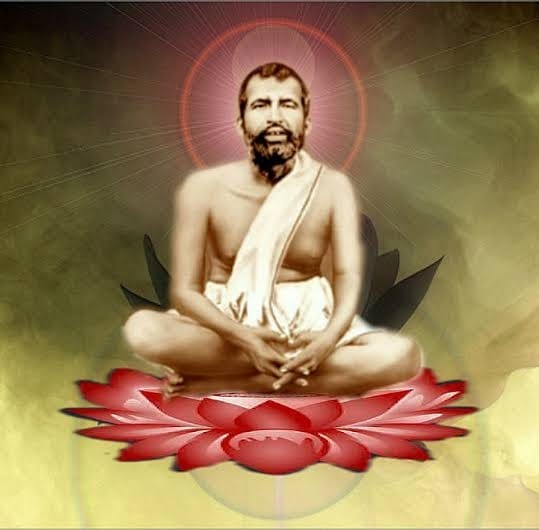Sri Ramakrishna Paramahamsa was a mysterious figure in the 19th century and a very prominent one in India’s spiritual world. He began from a poverty-ridden family depth but covered an extraordinary spiritual path until he realized God in depth. His life has always been characterized by profound atonement toward divinity hence motivating millions of people throughout the globe toward god-fearing and adoring life. In modern times despite being beyond any particular religion, his flow of words that emphasized global love and understanding still vibrates well among those who search for truth.
In his childhood and youth
It was on 17 February 1836 when Gadadhar Chattopadhyay came into being at Kamarpukur; a small village within Bengal Presidency, India. Gadadhar Chattopadhyay was just like any common man (from a poor background) with simple agricultural roots as his father; Khudiram Chattopadhyay worked diligently while his mother Chandramani Devi upheld incredible faith throughout her life span despite having nothing much materially speaking about her husband’s livelihood contributions. Since his earliest age, Ramakrishna displayed an unusual penchant for spiritualism. His early life was characterized by mystical experiences planes along occurrences involving superior beings. These initial events eventually determined his course in adulthood.
He never had formal schooling at least not in the conventional sense but had an unquenchable thirst for knowledge. He soaked up religious literature, tales, and folklore from his mother and elderly villagers. This would lay the foundation of his later spiritual endeavors.
The Temple Priest
At twenty years old, Ramakrishna was ordained as the chief priest of the Dakshineshwar Kali Temple in Calcutta, thus advancing the cause of the goddess Kali. This was a huge responsibility for such a young man but it provided him with unequalled opportunity for his spiritual development.
His devotion was so intense that he made Kali, the Divine Mother, the central focus of his spiritual practices. He wanted to experience the fullness of the divine by taking seriously fasting, engaging in hard austerities as well as serving selflessly. Samadhi is one example of his deep meditative states which occurred as a result of unshakable faith and extreme worship.
The Quest for Truth
Ramakrishna did not stick to one path in his spiritual quest. He was driven by an unquenchable thirst for knowledge and so he went on to explore different religious paths. He studied Hinduism, Islam, Christianity, and other religions to find out if there is an aspect that unites them all.
Each spiritual master he encountered enriched his view and deepened his understanding of the divine. He absorbed the best from all salient factors in a certain way that does not constrain one by dogma or ritual aspects. Ramakrishna’s approach to spirituality is a great example of eclecticism that reveals his broad-mindedness and inclusive nature.
The Master and His Disciples
As more people came to know about him and considered hiring him as their spiritual teacher this man attracted many disciples from diverse professions across India hence why numerous individuals with varied backgrounds followed him including Brahmins and teachers along with householders laborers merchants lawyers living near Kolkata along with wandering ascetic communities—numerous others too joined just so they too could have a share in what “God-knowledge” meant all time long till eternity’s calling echoed amidst them being unable since they felt drawn towards footsteps marked down by one who always led others into true life amidst great mysterious happenings all around.
Many people were astonished by his simplicity even though he had deep knowledge concerning human life and all things pertained to it in both terrestrial context and spiritual realms equally as well, yet others felt attracted to his teachings because they were simple yet profound advocating love through service not following any dogma verbatim order but understanding what one reads for themselves.
Accordingly, one of the most prominent among these was Naren Nath Dutt (later Swami Vivekananda). A profound opponent of Vedanta philosophy was Vivekananda whose philosophical outlook was heavily influenced by Ramakrishna’s teachings. Under his leadership, Vivekananda ensured that the message of Sri Ramakrishna reached the countries of the world.
The Legacy of Ramakrishna
Sri Ramakrishna’s life remains an embodiment of numerous people throughout the world. He underlined the oneness of all faiths, selfless work as a part of divine worship, and path towards devoted life, and his name has touched the hearts of millions. Today the Ramakrishna Mission and Math (founded by Swami Vivekananda) are continuing this tradition by providing help to mankind and spreading the message about enlightenment.
Ramakrishna’s message is particularly relevant in the contemporary world which is characterized by religious intolerance and disunity. In place of war and conflict, some hope can be gleaned from Ramakrishna’s clarion call for comprehensive love and acceptance that covers all spheres of life hence bringing such to bear on society at large. By doing so we shall contribute towards a more just society.

